Completely innocent men, women and children have been slaughtered. ‘Terrorism’ hardly suffices to describe the savage rampage beyond the Gaza Wall undertaken by men from Hamas on 7 October. In the aftermath of the Second World War, when knowledge emerged of the crimes perpetrated by Nazi Germans and their collaborators, humanity vowed ‘Never Again’. Yet the world has descended once more into ever lower levels of depravity. What is more, thousands of innocents are now being killed as collateral in the on-going counterattacks.
The kibbutz of Kfar Aza and kibbutz Be’eri, where some of the most barbaric crimes were carried out by Hamas, joins the long list of places of infamy where scenes of murder and bloodshed have occurred. Some of these places are familiar. But many are not. Ukraine, whose conflict with Russia has been somewhat sidelined by the war in Gaza, is a country with far too many forgotten memory sites: Hanaczów, Laskiv, Sakhryn, Szerokie Pole, and Ziemianok. It is vital that such names are not forgotten.
Volhynia, a part of north-west Ukraine, is one such region, where the events that unfolded during the Second World War risk being lost to the sands of time. The province has different names, in German, in Ukrainian (Воли́нь), and in Yiddish. But to Poles, Wołyń (as it is known) refers less to a geographical area than to a historical event – a massive, genocidal atrocity largely absent from the world’s history books.
Bands of armed Ukrainian peasants carrying knives, pitchforks, scythes and machetes, gathered as darkness fell
Volhynia formed part of the Polish-Lithuanian Commonwealth for centuries. Then, under Tsarist Russian rule from the late 18th Century, it entered the so-called ‘Pale of Settlement’, which defined the only area where Jews could legally reside. In the 20th century’s inter-war period, it passed briefly to the short-lived Republic of Ukraine and subsequently to the Republic of Poland, being inhabited mainly by three substantial ethnic communities: Poles, Ukrainians and Jews. In 1939-41, during the Nazi-Soviet Pact, Volhynia was overrun by Stalin’s Red Army and annexed by the USSR. For three years following Operation Barbarossa, it was occupied by German forces, forming the western base of the Reichskommissariat Ukraine.
In 1943-44, the Reichskommisariat Ukraine was reeling from the meat-grinder battles of Stalingrad and Kursk far to the east. The German occupiers were losing the dominant position established earlier, when the ‘Master Race’ had organised their ‘Final Solution’. Volhynia’s Jews were already dead. A much reduced population of Ukrainians and Poles eyed each other uneasily amidst vicious, multi-sided partisan warfare. Local German forces were preparing their imminent retreat. The clandestine ‘Ukrainian Insurrectionary Army’, the UPA, was reviewing its options.
The events that unfolded in the Volhynian countryside are no longer in doubt. Inspired and organised by UPA, bands of armed Ukrainian peasants carrying knives, pitchforks, scythes and machetes, gathered as darkness fell. Having received blessings from religious leaders, they set out to destroy neighbouring Polish villages, and murder the inhabitants: men, women and children. Repeatedly, Polish villages would be torched after nightfall. Whole families would leave their beds and run into the open for safety, only to be cut down by the waiting gangs. The months’-long campaign spread into the nearby province of East Galicia. Hundreds of settlements were obliterated; settlers were specially targeted, and, by the end, Volhynia’s entire pre-war Polish population was either dead or in flight.
Yet mere killing does not capture the essence of Volhynia. Time and again, the attackers engaged in extreme forms of gratuitous cruelty – dismembering pregnant women, spearing foetuses, mutilating children, chopping up babies, burning families alive, crucifying priests on church doors. They advertised their intent of annihilating their neighbours’ capacity to reproduce and have a future. The more fortunate victims were beheaded at one blow.
Volhynia’s enormity was covered up for decades. In July 1944, the Red Army arrived, drove out the Germans, pursued its own programme of persecutions, and fought all partisan groups to a standstill. The NKVD’s security forces controlled not only the Red Army and its marshals, but all aspects of civilian life. The Communists’ fierce system of censorship was enforced throughout Ukraine and the Polish People’s Republic. People whispered the name of Volhynia at their peril.
Independent commissions of inquiry only started work in the 1980s. One early investigation by the Roman Catholic church scoured parish records and grilled surviving witnesses. Its conclusions suggested that the total number of victims might have reached half-a-million. Since then, historians have reviewed the evidence and estimates of victim totals now hover close to the 100,000 mark. After 1991, the authorities of independent Ukraine conceded the basic facts, and several inadequate ceremonies and memorials were instigated. Ukrainian sources revealed that the wartime mayhem encompassed retaliatory violence by Polish self-defence units.
Most bewilderment surrounds the perpetrators’ psychology, whose background obviously lies in the specific, mid-war predicament of the Ukrainian underground. Traditionally, Ukraine’s national movement had fought against Russia. In Tsarist times, most Ukrainians lived in the Russian Empire, whose authorities – like Putin today – steadfastly denied their rights and identity, dismissing them derisively as ‘Little Russians’.
Mere killing does not capture the essence of Volhynia
In the First World War, therefore, Ukrainian leaders turned to Germany, and it was German forces, victorious on the Eastern Front, who helped create the first Ukrainian Republic. Between the wars, the Ukrainian national movement (OUN) was crushed, both in Western Ukraine by the Polish Army, and elsewhere by the Bolsheviks.
The exiled OUN leadership lingered in Berlin. They watched in despair as swathes of Volhynia and Galicia were taken over by waves of state-sponsored settlers, while in Soviet Ukraine Stalin’s terror-machine organised the Holodomor, the artificial famine, which starved four million Ukrainians to death.
In 1939-41, the Nazi-Soviet Pact saw Hitler’s and Stalin’s officers shaking hands in Volhynia. With forcible, Soviet-style collectivisation imminent, Ukrainian resistance mobilised, and split. One faction, the OUN (M) headed by Andrei Melnyk urged a cautious approach. Its rivals in OUN (B), headed by Stefan Bandera, demanded radical measures. The clandestine UPA took shape in the underground. In June 1941, in Operation Barbarossa, the German Wehrmacht roared through Volhynia and Galicia on the long road to Russia. Thinking the Germans friendly, as in 1918, OUN leaders broke cover in Lemberg (now Lviv), Galicia’s capital, announcing the launch of an independent republic. The Gestapo promptly arrested them. Bandera was cast into a Nazi concentration camp. Soon, a foul pogrom of Jews occurred as Ukrainians retrieved tens of thousands of corpses from the city’s prisons – the work of the retreating NKVD.
For two years, as the Nazi-German cause thrived and the ‘Shoah’ reached its height, the OUN/UPA pursued ambiguous policies. One element collaborated with the ruling Nazis, helping to recruit the Waffen-SS 14th Galizien Division. The other element, still dreaming of independence, took to the backwoods, harbouring the slogan of ‘Neither Hitler, nor Stalin’. By July 1943, having gained supremacy at Kursk, Stalin’s resurgent armies were poised to sweep out of Russia and back into Ukraine. In rear provinces like Volhynia, the Germans’ main thought was to withdraw.
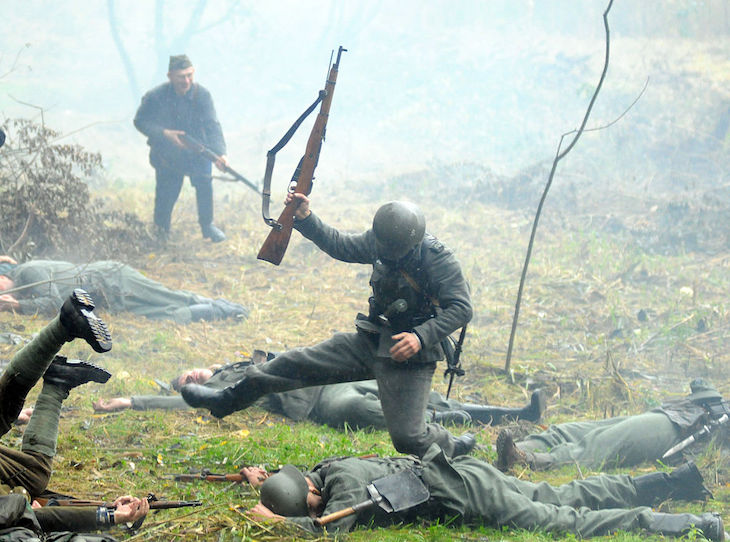 People dressed as members of Ukrainian Insurgent Army (UPA) fight German soldiers during the re-enactment of a battle outside the western Ukrainian city of Lviv to mark the 67th anniversary of the founding of UPA in 1943. (Credit: Getty)
People dressed as members of Ukrainian Insurgent Army (UPA) fight German soldiers during the re-enactment of a battle outside the western Ukrainian city of Lviv to mark the 67th anniversary of the founding of UPA in 1943. (Credit: Getty)
The Waffen-SS Galizien, badly mauled in battle, would never fight again. Ensconced in a secret hideout, an UPA colonel called Dmytro Klachkivsky (1911-45) weighed up the prospects. He saw that the elimination of the Jewish population was leading to a two-way stand-off between Ukrainians and Poles. He would have feared not just the Red Army’s return, or the NKVD and its attendant horrors, but also Stalin’s recent recognition of a restored Polish Communist Party. This decision raised the future possibility of a re-established Polish state, whose post-war territory could conceivably include Volhynia. What then might be the fate of Volhynia’s Ukrainians?
Surrounded by extreme violence on all sides, as practised by Nazis, Stalinists, assorted bandits and anti-partisan warriors, Klachkivsky would not shrink from violence himself. In his world, it was the norm. International law had evaporated. Moreover, racist ideas were in the air. In line with one strand of thinking in the OUN/UPA, Klachkivsky knew the pre-war writings of his own namesake, Dmitro Dontsov (1883-1973), an ‘integral nationalist’, who saw history as a Darwinian struggle, ‘red in tooth and claw’. People of that persuasion viewed their nation as a biological species, believed in the ‘survival of the fittest’, and asserted their right to a country exclusively for themselves. For them, the concept of self defence would have centred more on the Old Testament quote about ‘rooting out tares from the wheat’ than on the ‘Parable of the Tares’ in St.Matthew’s Gospel. Awaiting Stalin’s mighty steam-roller of retribution, Klachkivsky would have calculated rightly that UPA’s days were numbered. But he still had a small window of opportunity. He is widely held to be the person, who gave the order for Volhynia to start. Needless to say, a vital distinction must be drawn between Klachkivsky’s group and the over-forty-million-strong Ukrainian nation as a whole, which today is straining every sinew to defend its own children.
In the eighty years since 1943-4, of course, the kaleidoscope of suffering, prejudice, injustices, misconceptions, subjective memories and partial histories has shifted several times. People of goodwill shake their heads. The world does not seem to have reached a markedly better place.
Got something to add? Join the discussion and comment below.
Get 10 issues for just $10
Subscribe to The Spectator Australia today for the next 10 magazine issues, plus full online access, for just $10.

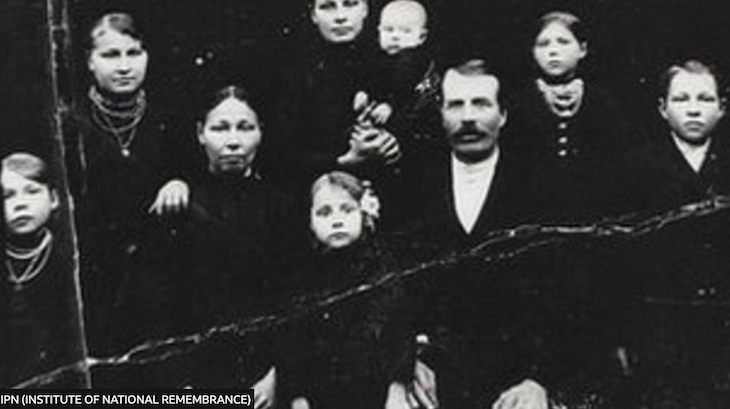
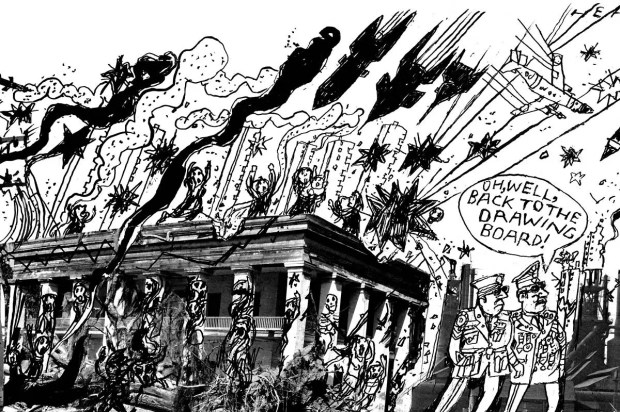
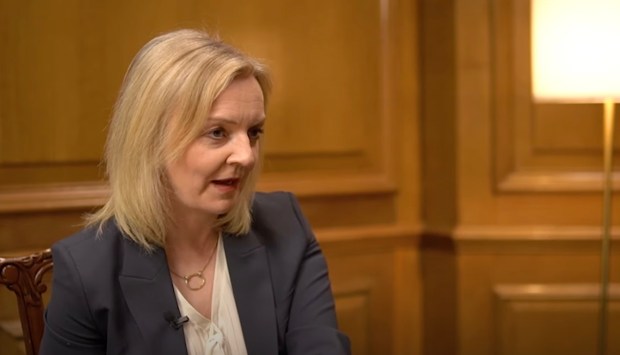
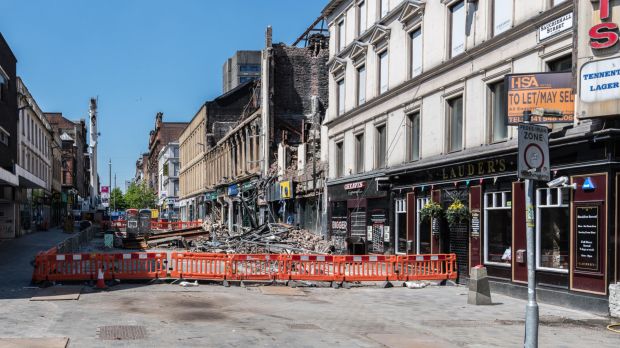














Comments
Don't miss out
Join the conversation with other Spectator Australia readers. Subscribe to leave a comment.
SUBSCRIBEAlready a subscriber? Log in